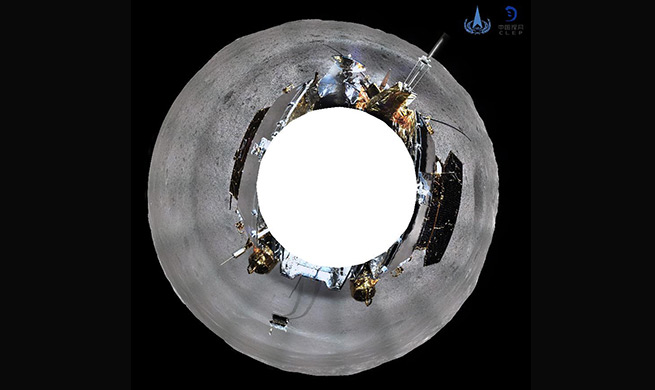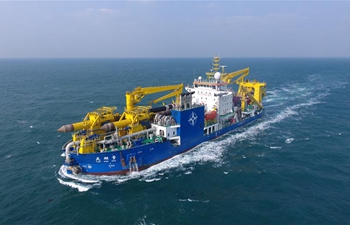GENEVA, Jan. 11 (Xinhua) -- The cold wave that has brought heavy snowfalls to southern Europe, where such weather has rarely been seen, is likely to last for another week, while above-normal precipitation in the eastern Mediterranean sub-region and northern Middle East is expected over the coming week or two, the World Meteorological Organization (WMO) warned on Friday.
These anomalies can be attributed to a persistent low-pressure area over northern Germany and Sweden, which has also impacted the weather in northern Europe and the central and eastern Mediterranean, the WMO said.
As a result, flooding along the Baltic coast of Germany and Denmark as well as very heavy snowfall in the northern Alps, especially in Austria and southern Germany, have been reported since the beginning of this year.
Effects have also been felt in southeast Europe with heavy snowfalls in the mountainous areas and even in and around Athens, Greece, and as far west as the mountainous areas of northern and central Spain. On the other hand, certain areas of the southern Alps have seen below normal amounts of snow.
According to the WMO, the cold wave is likely to continue in eastern central, eastern and south-eastern Europe for one more week, with possible extension to further areas in the north and west in the following weeks. The probability of this development exceeds 90 percent.
The cold wave will cause widespread frost even in lowlands, which might have a dangerous impact on vegetation and health. Heavy snow will also persist in large parts of the continent.
Meanwhile, a period of above-normal precipitation in the eastern Mediterranean sub-region and the northern parts of the Middle East is expected for at least the next one to two weeks. The probability exceeds 90 percent for the first week and 60 percent for the second week. Enhanced precipitation can cause local flooding and landslides.
According to WMO data, the last four years have been the warmest on record, with 2018 being the fourth warmest, and more than 0.4 degrees Celsius warmer than the 1981-2010 average.
The most pronounced warming compared to the long-term average occurred in the Arctic. At the end of 2018, satellite records showed the Arctic sea ice hit its third lowest level, and sea ice levels in the Antarctic remained at historic lows.
The WMO will issue the final temperature figure for 2018 once it receives data from all the cooperating agencies.

















